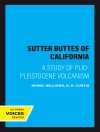Processes of synchronization and interaction play a very special role in different physical problems concerning the dynamics of the Earth’s interior; they are of particular importance in the study of seismic phenomena, and their complexity is strongly affected by the variety of geological structures and inhomogeneities of the medium that hamper the course of these processes and their intensity. The attempt to tackle these problems is a great challenge from experimental, observational and theoretical point of view. We present in this Monograph the theoretical and experimental results achieved in the frame of the European Project “Triggering and synchronization of seismic/ acoustic events by weak external forcing as a sign of approaching the critical point” (INTAS Ref. Nr 05-1000008-7889); in this Project, which was inspired by Professor Tamaz Chelidze, our aim was to give grounds for better understanding and interpretation of dynamical interactive processes of physical ?elds, both found in the laboratory experiments as well as in ?eld observations. One of the leading problems – related to synchronization and interaction of different physical ?elds in fracture processes concerns triggering and initiation of rupture and displa- ments within the Earth interior. From this point of view, the results from laboratory studies on synchronization and interaction and those found and involved in ?eld observations, helped to improve the theoretical background. Reversely, some of the presented new theoretical approaches have served to stimulate laboratory and ?eld studies.
Inhoudsopgave
Theoretical studies.- Nonlinear Dynamics as a Tool for Revealing Synchronization and Ordering in Geophysical Time Series: Application to Caucasus Seismicity.- Models of Stick-Slip Motion: Impact of Periodic Forcing.- Shear Oscillations, Rotations and Interactions in Asymmetric Continuum.- Processes in Micro-Fracture Continuum.- On a Simple Stochastic Cellular Automaton with Avalanches: Simulation and Analytical Results.- Ito Equations as Macroscopic Stochastic Models of Geophysical Phenomena – Construction of the Models on the Basis of Time Series.- The Importance of Privilege for the Appearance of Long-Tail Distributions.- Laboratory experiments.- Triggering and Synchronization of Stick-Slip: Experiments on Spring-Slider System.- Oscillating Load-Induced Acoustic Emission in Laboratory Experiment.- Acoustic Emission Dynamics Initiated by Fluid Infusion on Laboratory Scale.- Acoustic Emission Spectra Classification from Rock Samples of Etna Basalt in Deformation-Decompression Laboratory Experiments.- Phase-Shifted Fields: Some Experimental Evidence.- Field observations.- Periodical Oscillations of Microseisms before the Sumatra Earthquake of December 26, 2004.- Synchronizations of Microseismic Oscillations as the Indicators of the Instability of a Seismically Active Region.- Multifractal Parameters of Low-Frequency Microseisms.- Changes in Dynamics of Seismic Processes Around Enguri High Dam Reservoir Induced by Periodic Variation of Water Level.- Earthquakes’ Signatures in Dynamics of Water Level Variations in Boreholes.- Detecting Quasi-Harmonic Factors Synchronizing Relaxation Processes: Application to Seismology.- Stacked Analysis of Earthquake Sequences: Statistical Space–Time Definition of Clustering and Omori Law Behavior.- Dynamical Changes Induced by Strong Electromagnetic Discharges in Earthquakes’ Waiting Time Distribution at the Bishkek Test Area (Central Asia).











